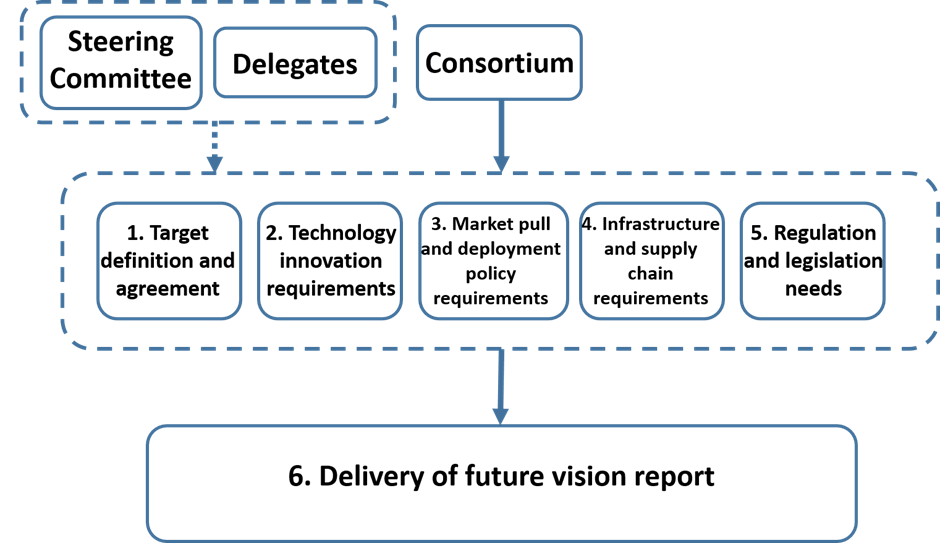

To ensure that the tidal stream and wave sector reaches its full potential, there is a need for synergy at all levels of research and development, complimented by a coordinated leadership with a clear and widely adopted implementation strategy for future development. The ocean energy sector possesses the long-term potential to become a vital part of the international low-carbon energy-mix through the provision of sustainable electricity production. In addition to this it has enormous potential in areas such as sustained job creation, gross value added to national economies, the development of ancillary industries and driving a direct reduction in the dependence on fossil fuels.
Roadmaps are an effective tool to underpin the identification of priority focus areas and investments to accelerate ocean energy technology development, allowing LCOE reductions to be realised.
Additionally, roadmaps can facilitate the creation of international frameworks to accelerate the development and adoption of low carbon technologies.
Unified international policies are a key step towards a successful marine energy industry and then the creation of an international roadmap is very important to achieve that goal.
There is an opportunity for OES in collaboration with its members to engage with and support the construction and development of an International Ocean Energy technology roadmap, engaging with ongoing work in international assessments of LCOE, and building upon this with directed effort at outlining the credible pathways towards a reduced LCOE, and demonstrating the long term implications of ensuring ocean energy plays a significant role within the EU energy mix. This opportunity is in line with the International Energy Agency’s (IEA) own technology road-mapping work (and the policies that underpin these documents), and can underpin and enhance international collaboration, whilst influencing and guiding both political and business decision makers within the field of ocean energy.
The methodology for developing an International Vision was based on addressing a number of key challenge areas, all of which must be concurrently and systematically solved to provide the sector with a clear pathway to meeting its future targets. This has involved producing a concise summary of both the present and future global development plans for the sector, including barriers to commercialisation, supply chain evolution and technology improvements to lower the localised cost of energy.
There is a need to evaluate technological and non-technological challenges as the sector progresses towards increasing states of TRL, with guidance provided by relevant bodies to ensure that the necessary technology innovation required to advance the sector occurs. Ensuring that the figures for job creation and gross value added for national and international economies are clearly highlighted is important in ensuring continued financial and legislative support for the sector.
Overall, a series of recommendations must be formulated and put forward to accelerate the development of tidal stream and wave technologies.
The following methodology was proposed with the aim of delivering a clear IEA-OES future vision proposal with regards to the global development and deployment of the tidal stream and wave sector.
This methodology consisted of six distinct but interconnected tasks:

As a result of this Task, an International Vision for Ocean Energy Report has been developed. An initial version was published in 2017 and reviewed in 2022. The new vision launched in November 2023 addresses a number of key challenge areas, all of which must be concurrently and systematically solved to provide the sector with a clear pathway to meeting its future targets. This includes a concise summary of both the present and future global development plans for the sector, including barriers to commercialisation, supply chain evolution and technology improvements to lower the localised cost of energy. There will be a need to evaluate technological and non-technological challenges as the sector progresses towards increasing states of TRL, with guidance provided by relevant bodies to ensure that the necessary technology innovation required to advance the sector occurs. Ensuring that the figures for job creation and gross value added for national and international economies are clearly highlighted will be important in ensuring continued financial and legislative support for the sector. Overall, a series of recommendations are formulated and put forward to accelerate the development of tidal stream and wave technologies.